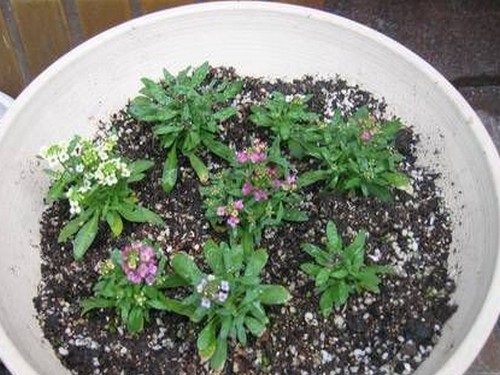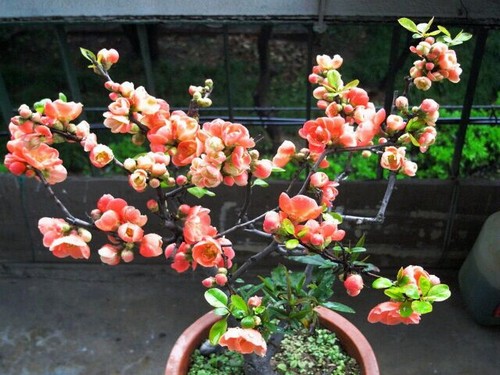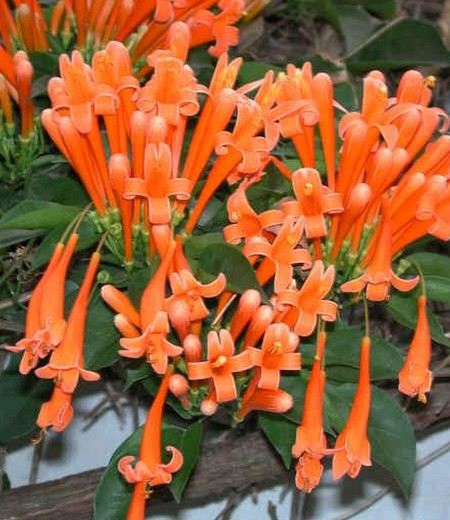The planting method of delphinium
Delphinium is a kind of taproot flower, which is better for direct seeding and is not resistant to transplanting. To plant delphinium, you can first sow the seeds on the sowing plate, and then hold the pot in the 10cm basin. During the growing period, the grass was fertilized once every semimonthly, and the phosphorus and potassium fertilizer was applied 2-3 times before flowering. Keeping the soil moisture during the flowering period can prolong the flowering period. After ripening, the fruit of Swift grass will crack and scatter the seeds, so the seeds should be collected in time.

There are many seeds in the fruit, and the seeds are small, which are collected and dried and stored in a cool and dry place in the room. In order to make delphinium multiseason blossom can be sown by stages, but the southern cultivation should stagger the flowering period in midsummer and hot days.
The perennial delphinium of the same species can also be propagated by cutting and ramet. The cuttings of delphinium are raised in spring and picked and planted in wet sand beds or sand tables. Ramet can be carried out in spring and autumn, the seedlings germinated around the old plant, dug up with roots, divided into small plants, if the spring ramet can blossom in the same year.
[the planting method of delphinium]
1. Sowing: delphinium can be sown in spring and autumn. If sowing in autumn, it must be in mid-September.
2. Maintenance: swallow must keep the soil moist after sowing. The easiest way is to cover some grass and gradually remove the mulch after emergence.
3. Change the basin: when Swift grass grows 2 true leaves, it needs to take soil and transplant it in a small basin, wait until the seedling grows up and then change the basin again.
4. Watering: dry manure is used as basic fertilizer when changing pots for delphinium. In order to prevent the plant from growing too high, paclobutrazol of 5000PPM can be applied once, or 1500PPM can be applied for a long time, once every half month until budding. To water swallow grass to master between dry and wet, flowering should be appropriate more watering, do not make the soil too dry.
5. Fertilization: during the growing period, the eye fertilizer was applied once every half month, and the phosphorus and potassium fertilizer was applied 2-3 times before flowering. The soil is kept moist during the flowering period, which can prolong the flowering period. According to the growth status of delphinium, cake fertilizer and water are applied 1-3 times a month.
6. Height control: after swallows are changed, paclobutrazol can be used to control the height of the plant. The specific method is to apply 0.5% paclobutrazol every 2 weeks.
7. Seed collection: the seeds of delphinium are mature from August to September, because the seeds mature first if they blossom first, and the fruit will split naturally after ripening, so they should be harvested in time to avoid scattered.
8. Diseases and insect pests: black spot, root neck rot and chrysanthemum leaf blight nematode disease are common in Swift grass. When the disease occurs, the diseased plant is cleared in time, burned centrally, and sprayed with 50% methyl topiramate wettable powder diluted 500 times. The common pests of swallows are aphids and nocturnal moths, which are sprayed with 2000 times diluted 10% deworming EC.
Delphinium needs a sunny and cool growth environment. It can tolerate both cold and drought, but it is not resistant to high temperature and moisture, and the requirement for soil is not very high. However, when planting, we should pay attention to the following problems:
① sowing time. Seeds can be sown in spring and autumn, and if sown in autumn, they must be sown in mid-September.
② maintenance. The soil must be kept moist after sowing. The easiest way is to cover some grass and gradually remove the mulch after emergence.
③ transplantation. When Swift grass grows 2 true leaves, take soil and transplant it in a small basin, wait for the seedling to grow up and change the pot again.
④ watering. Watering should be dry and wet, and a little more water should be properly watered during the flowering period to avoid excessive dryness of the soil.
⑤ fertilization. Dry manure was applied as base fertilizer when changing pots, and then rotten cake fertilizer and water was applied one to three times a month according to the growth situation.
⑥ is controlled high. After changing the basin, paclobutrazol was used to control the height of the plant by applying 0.5% paclobutrazol every 2 weeks.
The seeds were collected by ⑦. The seeds should be collected in time to avoid fruit cracking after ripening.
Time: 2019-05-25 Click:
- Prev

Planting technique of Tripterygium
Tripterygium has always been known as the immortal in the flower, the delicate beauty of the flower powder, the elegance of the white and the warmth of the red. There is a bit of pride in monopolizing the branches when there are no green leaves, so refreshing blooming in the spring. When there are green leaves, the delicate leaves also give birth to a delicate daughter, showing her face so softly and shyly.
- Next

Planting techniques of potted firecrackers
Firecracker flowers are usually cultivated in the open air in balconies, balconies and courtyards, which need to be set up with wooden and iron climbing flower racks, and smaller potted plants can also be displayed in the living room during the Spring Festival, which can bring good luck to the home for a good year. In addition, it is also a good New year gift for relatives and friends.
Related
- Fuxing push coffee new agricultural production and marketing class: lack of small-scale processing plants
- Jujube rice field leisure farm deep ploughing Yilan for five years to create a space for organic food and play
- Nongyu Farm-A trial of organic papaya for brave women with advanced technology
- Four points for attention in the prevention and control of diseases and insect pests of edible fungi
- How to add nutrient solution to Edible Fungi
- Is there any good way to control edible fungus mites?
- Open Inoculation Technology of Edible Fungi
- Is there any clever way to use fertilizer for edible fungus in winter?
- What agents are used to kill the pathogens of edible fungi in the mushroom shed?
- Rapid drying of Edible Fungi

